FIRST AFRICAN AMERICAN WOMAN TO SERVE IN A STATE LEGISLATURECrystal Dreda Bird was born June 27, 1894, in Princess Anne, Maryland, the
youngest of nine siblings to Benjamin Oliver Bird, the first principal of Princess Anne Academy (now the University of Maryland Eastern Shore), and Portia E. Lovett Bird. Upon the death of Benjamin Bird in April of 1897, Portia took over the Academy’s leadership until her own death two years later in March of 1899. Just over five years old when her mother died, Crystal was reared in Boston by her maternal aunt, Lucy Groves and was educated in the integrated public schools of Boston. In 1914, Crystal received a degree from Boston Normal School, and taught in the public schools for three years. In 1918, she began work as a supervisor with the Young Women’s Christian Association (YMCA) and traveled the United States of America, Cuba and Mexico as the YMCA’s representative on services for blacks. She was also associated with the American Friends Service Committee (AFSC), a service organization affiliated with the Quakers. After the relief effort in Europe ended in 1924, it was decided that better interracial relations needed to be addressed in the United States. In 1925, an Interracial Section was formed in the AFSC and Crystal Bird was offered a staff position, and she began work with the group in 1927. Her goal with the organi- zation was to “have people of other racial groups understand the humanness of the Negro wherever he is found,” and to literally “lift the curtain of misunder- standing that is so dividing us.” From September of 1927 to September of 1928, she made 210 appearances before over more than 40,000 people (mostly whites) for the AFSC. Her emphasis was to present the contributions of African Ameri- cans to American life, which often included an analysis of prejudice because she realized that many white Americans did not understand nor think of African Americans as humans. In 1931, Crystal Bird graduated from Teachers College Columbia University with a Bachelor of Science degree and worked as a social worker and administrator of Negro Affairs for the YMCA in New York City and Philadelphia. While a student at Columbia University, Crystal was an accomplished singer and pianist, but she was also a social activist. She repeatedly gave a lecture entitled “Music in the Life of America.” In 1931, she married Arthur Huff Fauset (1899-1983), a soci- ologist, anthropologist, and political activist, a University of Pennsylvania alumnus, and Principal of Philadelphia’s Singerly Public School. He was from a well-established family and was the fourth known African American to have received the doctorate in anthropology. Sadly, the marriage did not last over a year and he divorced her in 1944. In 1932, Crystal Bird Fauset established the Colored Women’s Activities Club for the Democratic National Committee where she helped African American women register to vote. The next year, she helped to establish and was named executive secretary for the Institute of Race Relations at Swarthmore College, where she documented incidents of job and housing discrimination in Pennsylvan- ia. In 1935, she became director of the Negro Women’s activities for the Demo- cratic National Committee, and in 1936 was appointed assistant personnel di- rector in the Philadelphia Office of the Works Progress Administration (WPA). Crystal Bird Fauset was such a prominent and prolific figure in Philadelphia’s politics and was so active in getting people to vote, especially women, that in 1938, she was asked by Philadelphia’s local Democratic Party to run for a seat in the Pennsylvania House of Representatives. She was elected on November 8, 1938 to the Assembly of the Commonwealth of Pennsylvania, as the first African American woman ever elected to a state legislature. She won in a district where two-thirds of the voters were White. In office, her focus was on slum clearance, low-cost housing projects, public health, public relief, protection for women in the workplace, and fair employment legislation which banned discrimination against minorities. In 1939, Pennsylvania’s Governor George Earle recognized Crystal Bird Fauset’s efforts by giving her the Meritorious Service Medal. She kept her po- siton in the legislature for only one year because she accepted an appointment in November of 1939 to the Pennsylvania WPA as assistant director in charge of education and recreational programs. She resigned her post in the Pennsylvania State Legislature because she believed she was more effective helping people by promoting equal justice and understanding between the races in her position with the WPA. She was criticized for her decision to resign the positon, but it did not deter her from her goal of helping others. However, in 1941, with the assistance of her very close friend, First Lady Eleanor Roosevelt, and New York City Mayor Fiorello LaGuardia, Crystal Bird Fauset was appointed the special racial consultant on Negro Affairs in the Office of Civilian Defense in Washington, D.C. As a result of those close connections to major, powerful political figures, Crystal Bird Fauset was soon listed as a member of President Roosevelt’s “Black Cabinet,” that promoted civil rights and fair en- listment for Black Americans. Crystal Bird Fauset also helped to recruit Black Americans for the military and the war effort. During World War II, she disagreed with the formation of segregated Black units within the military and its policy of racial discrimination. By 1944, she had become disappointed with the Democratic Party and its mishandling of Black Americans during the war. She did not care for its manner of excluding blacks from combat missions, their assignment to menial jobs, their exclusion from USO canteens, and other blatant discriminatory practices. After having expressed her concerns with the Democratic Party and nothing seemed to have been done to rectify those issues, Crystal Bird Fauset switched her political affiliation to the Republican Party in 1944. She supported the Republican Party’s candidate, Thomas E. Dewey, as she had the previous Democratic candidate, and eventually became an advisor on Negro Affairs to the Republican National Committee. Switching political parties did not further her political career, and it ended her appointments to major national and local committees. Nonetheless, it did not end her commitment or involvement in civic affairs and community activism. Crystal Bird Fauset remained active in state and local politics. Other posit- ions she held included the following:
For her work encouraging people to vote and participating in the political process, her efforts to achieve international friendship and her leadership in the American-Korean Foundation, Crystal Bird Fauset received her second Merito- rious Service Medal from the Commonwealth of Pennsylvania. It was presented to her by Governor John S. Fine in 1955. Crystal Bird Fauset did not retire from the political scene but continued to help initiate political, social and economic change until she had a heart attack and died in Philadelphia, Pennsylvania on March 27/28, 1965. Due to her commit- ment to public service, a Pennsylvania Historical and Museum Commission Mar- ker is located outside of her former home at 5402 Vine Street in Philadelphia. Crystal Dreda Bird Fauset was born and spent her early years on the campus of Princess Anne Academy (UMES), in Princess Anne Maryland, until she was orphaned. She had the determination to succeed in spite of the odds against her. She studied, learned, worked hard and became the first African American woman to serve in a state legislature. She was a trailblazer, as she paved the way for women to engage in politics and public service locally, nationally and interna- tionally.
0 Comments
Early Life and Education: Mary Francis Fair Burks was born in 1915 in segregated Montgomery, Alabama. Growing up in Montgomery during the 1930s, she defied the Jim Crow system by insisting on using white-only elevators, rest rooms, and other facilities in what she called “her own private guerilla warfare.” At eighteen, she earned her Bachelor of Arts in English Literature from Alabama State College, now Alabama State University, in 1933. A year later, she received a Master of Arts in English Literature from the University of Michigan. She returned to Montgomery to teach at the Alabama State Laboratory High School, and then taught at the college. In the late 1940s she became Chairperson of the English Department at Alabama State College and later earned her doctorate in education at Columbia University. Activist Throughout her Life: Mrs. Burks was not allowed to join the League of Women Voters, and after being subjected to racist police policies, she formed the Women’s Political Council (WPC) in 1946. She and her group, the WPC, petitioned the city regarding their mistreatment on the city buses, but to no avail. That WPC began to consider the possibility of boycotting Montgomery buses prior to Rosa Parks’ decision not to give up her seat on a Montgomery bus which sparked the bus boycott on December 1, 1955. Mrs. Burks realized that women were the most affected by the humiliation, degradation, racism, anger and conditions on the buses, and not men because men drove the family cars to work. It was those humiliating experiences that prompted Mrs. Burks to begin the WPC that worked within the community to educate individuals about their constitutional rights and encouraged them to vote. The WPC consisted primarily of professional women that fostered leadership opportunities for women and purposely excluded men because men would have taken over the movement. In 1953, the WPC met with the City Commission and lodged complaints about the treatment of black passengers on the city’s buses, because the bus company’s loosely defined seating policy varied from route to route and driver to driver. African Americans were frequently required to shift their seats when ordered to do so by white drivers. They were also compelled to get on at the front door of the bus to pay their fare, then get off and then reboard at the back or side door, instead of simply being allowed to walk down the aisle. Drivers sometimes moved off before black passengers had time to reboard which resulted in the loss of their fare as well as the loss of their ride for which they had paid. The WPC was later joined by the Reverend Dr. Martin Luther King, Jr. and the National Association for the Advancement of Colored People (NAACP), as the WPC continued to ask for a redress of grievances from the City Commission and to end discrimination on city buses and other forms of transportation. Mrs. Burks was a member of Dexter Baptist Church, which was ministered by Dr. King, and when he established a Social and Political Action Committee at Dexter, he encouraged church members to support the NAACP and to become registered voters. Burks and others joined it as well. When Rosa Parks was arrested and the bus boycott began on December 1, 1955, Mrs. Burks and the members of the WPC typed, duplicated and distributed flyers and leaflets, informed the black community, and organized car pools to transport workers for the originally planned one-day bus boycott. The boycott eventually lasted over a year, and blacks walked, carpooled, and hired black-own-ed taxis and car services instead of using city buses despite the violence, intimidation and legal pressure exerted by the City of Montgomery. In December of 1956, the United States Supreme Court ruled Alabama’s segregated bus systems unconstitutional, which ended the boycott. Due to her civil rights activities and those of her cohorts, Mrs. Burks and others were investigated by a State-appointed com-mission, and political pressure was exerted upon them by the school’s administration via the State. Mrs. Burks gave up her leadership position in the WPC, but unfortunately, that did not save her position as Chairperson of the English Department at Alabama State College or employment there. The college’s president publicly announced that he would fire or purge those involved with the protests. On March 31, 1960. Mrs. Burks wrote to her pastor, Reverend Dr. Martin Luther King, Jr. and asked his assistance in helping her find employment for the fall. He responded on April 5, 1960 to her letter and stated that he would help her to find some possibilities for the next school year. Mrs. Burks left her beloved home in Montgomery, moved to the Eastern Shore of Maryland and found employment at Maryland State College, now the University of Maryland Eastern Shore (UMES), in Princess Anne, Maryland. She wrote articles on contemporary Black writers, won teaching awards, and numerous professional honors and fellowships. She did post-graduate study at Harvard University, Oxford University in the United Kingdom, the Sorbonne in France, and other leading universities. At UMES, she continued to engage in political activism and worked to encourage citizens to register to vote. She helped to establish community organizations and groups, coordinated hospital volunteers, exemplified and taught etiquette less-ons, culture and style, served on the Maryland Arts Council, founded two African American historical societies, and remained active until her death on July 21, 1991. Mrs. Burks was so very close to people of power and influence that she was usually the person to introduce them when they visited the UMES campus. For example, when Reverend Dr. Martin Luther King, Jr. or Mrs. Coretta Scott King, and some others visited UMES, Mrs. Burks introduced them, and it was said by some that her introduction of them was usually longer than their speeches. Mrs. Mary Francis Fair Burks was an educator, a scholar and a civil rights activist, but she was also definitely a force to be reckoned with wherever she lived. Early life: John Augustus Wilson was born on September 29, 1943 in Baltimore, Maryland, but from an early age was reared by Laura and Walter Maddox, his maternal grandparents in Princess Anne, Maryland. He graduated from the old Somerset High School, which became Kiah Hall, on the University of Maryland Eastern Shore (UMES) campus. After graduation from high school, he enrolled in the public teachers college for blacks, Bowie State College, now Bowie State University, in Bowie, Maryland. Education: John Wilson’s first attempt to obtain a college education was unsuccessful, so he returned to Princess Anne and enrolled in Maryland State College (MSC), now the UMES, in the spring of 1963, where he majored in physical education. His time at MSC coincided with student protests nationwide. MSC students struggled to achieve equal treatment in Princess Anne when they learned that a desegregation agreement that had been negotiated by the Princess Anne Biracial Committee had been broken. On February 20, 1964, the MSC students were led by John “Johnny” Wilson, and community leaders Warren Morgan, Reverend Autry Cash and Curtis Gentry, went into the town of Princess Anne and sought service at the local restaurants. They were served at all but two restaurants. Civil Rights Activist: On the second day of the protests, a door hinge was strung. On the charge of destruction of property, Johnny Wilson was arrested on the MSC campus by Maryland State Troopers, on the belief that his arrest would end the protests. Contrary to that belief, Wilson’s fellow protestors placed themselves on the street directly in front of the patrol car which prevented the troopers from leaving cam-pus with Wilson. He was released and the police left the campus, but later that day Wilson went to the jail and turned himself in to the authorities. The protestors were committed to nonviolence, but the home of J. Leon Gates, an MSC accountant and Johnny Wilson’s uncle, was bombed, and a cross was burned in view of the campus. The students continued to protest the injustices and were attacked and bitten by police dogs, were beaten by baton wield-ing policemen, were called derogatory names, and were also blasted by high pressured fire hoses. Johnny Wilson was again arrested with nearly 30 other students. The students continued to protest and received support from as far away as Denmark and Austria. Local support came from Gloria Richardson, a civil rights leader from Cambridge, who marched with the students. Other support came from the comedian, author, political activist, Dick Gregory, who arrived in Princess Anne and offered financial and moral support. He proposed a boycott of the town, which was effective because MSC was the major source of profit for Princess Anne, and town, state and government officials took note of that fact. A meeting was arranged for the students to meet with Governor Tawes at the State House in Annapolis. It was ironic that the same State Police who had beaten the students and trained dogs on them had to chauffeur them to and from the meet-ing. At the meeting, the Governor promised that an accommodation act which guaranteed equal access to restaurants, hotels, etc., would extend to the Eastern Shore, and the protests ended. The protests put Johnny Wilson into the eyes of the media. Wilson did not complete his education at MSC. Instead, he left Princess Anne and became involved in the national civil rights movement, and allied himself with the National Association for the Advancement of Colored People (NAACP), and the Student Nonviolent Coordinating Committee (SNCC). Wilson also became close colleagues of Dick Gregory, Malcolm X, Congressman Allen Clayton Powell, Jr., and he work-ed alongside Marion Barry, the future Mayor of Washington, D.C., and future longtime Georgia Congressman John Lewis. Home Rule Charter: In the 1960s, John Wilson became a leading advocate of home rule for Washington, D.C. In 1974, Wilson served as the Chairman of the drive to approve the referendum to adopt the Home Rule Charter for the District of Columbia. The Charter allowed residents for the first time to elect both a mayor and a 13-member City Council called the Council of the District of Columbia. In 1974, Wilson was elected and won a City Council seat on the first D.C. Council. Wilson was a unifier, who brought rich, poor, young and old together. He had the audacity to tell people what he thought, criticized them to their faces regardless of who they were, and somehow they respected him in spite of it. He chaired the Finance Committee of D.C. before he was elected chairman of the Council in 1990. Some members of the city government and assistants of the Mayor’s Office referred to Wilson, “as a wizard in municipal finances.” Wilson believed that the government had to be healthy in order for it to function properly. Political Career: John Wilson served 18 years as an elected official, including two years as a D.C. Council Chairman. He was a champion of the underprivileged and disenfranchised, used his political skill to push through legislation on rent control, child abuse prevention, tax reform, consumer protection and victim rights. He was instrumental in getting legislation passed that included limits on converting rental housing to condominiums, gun control, and expanded medical care for women and children. Wilson also wrote the District’s tough anti-hate crimes laws as well as its human rights laws. For all that he tried to do, John Wilson was considered to have been “one of the most powerful and most popular men in D.C. politics.” Some people even thought he would run for the office of Mayor of D.C. Death: Unfortunately, on May 19, 1993, John A. Wilson was found deceased. His death was ruled a suicide based on the belief of the pressures of the job, a promising political career, possibly personal concerns, coupled with a guarded history of medical concerns, all may have loomed too large. His untimely death shocked everyone because he was described as a beacon of hope for everyone as he tried to improve the lives of others. In 1994, the District of Columbia municipal government building was named in his honor. A private drive off Backbone Road at the edge of UMES bears the name of “John Wilson Lane.” UMES also has two scholarship funds named in his honor. Therefore, John A. Wilson’s legacy lives through scholarships to help educate others. However, on a grand scale, according to John Wilson’s former math professor and President of UMES, Dr. William P. Hytche, “his [Wilson’s] legacy lies in his desire to make life better for other people.” The Unforgettable Legacy of Kermit Travers, Sr.: Journeying with the Last Black Skipjack Captain5/19/2023 Early Life: Kermit Robert Lee Travers, Sr. was born August 13, 1937 to Mable Pritchett Travers and George Travers in the Blackwater region of Dorchester County, eighteen miles east of Cambridge, Maryland. He was a part of a blended family of 12 children, but he was the only boy of nine children born to his parents. Kermit grew up in the poor, segregated backwater neighborhood among the water marshes and creek edges of the Honga, Blackwater and Choptank Rivers. Born just two years before the end of the Great Depression (1929-1939), when banks collapsed, businesses closed, homes were foreclosed, some people were reduced to starvation, and many of those who were employed as share-croppers and tenant farmers were forced off the land they worked. Even the most enterprising individuals found it difficult to care for their families. Few government agencies existed at that time to help families in dire straits. In many in-stances, those few who found employment were hired but were never paid. Kermit’s family was extremely poor, and they lived in an old two-story house that had little or no insulation as they could see through the cracks in the structure, which forced them to put paper and rags into the holes when it snowed. Nor did they have plumbing or running water, so the family trekked about a quarter of a mile to Kermit’s uncle’s residence for water. The rule of thumb was that there was no wasting of water. The family lived off the land and hunted for squirrels, rabbits, black birds, turtles, and raised ducks for subsistence. Just before Christmas, they killed 6 or 8 hogs and stored the meat. The family’s struggle to survive was so acute that for Christmas, Kermit often received hand-me-downs as gifts. As early as six years of age, Kermit learned to shoot a rifle to hunt animals in order to help feed the family and to cut wood to heat the house and to use it as fuel to cook their food. He also helped his father cut wood and hauled it on his shoulders out of the woods to sell to others. Education: Kermit began school at the age of six, but the survival of his family was a major concern. At the age of seven, he began to seek ways to help the family, and found employment in crab houses shucking oysters. He sought any type of work that would benefit the family, which meant that his desire to obtain an edu-cation and to become the first in the family to obtain a high school diploma be-came secondary. As a result, Kermit’s attendance at school was sporadic at best, as he worked on any job he could find to help support the family. Survival of the family was his major concern, coupled with his father’s illness, forced Kermit to quit school in the 10th grade, and he was forced to become a man before he wanted or truly understood the reason. At 15 or 16 years of age, he continuously sought gainful employment, and he was introduced to work on the water. By eighteen, he actively began to work on the water, but it did not produce enough funds for his family to survive. By the age of 18, he began to have a family of his own, but he was not making enough money to properly care for them, his mother, and siblings. Kermit even went to Florida in search of sufficient employment, but he soon returned to Cambridge because the situation there was no better than when he left Cambridge. In 1958, at the age of twenty-one, he accepted a job working with his uncle in New Jersey and learned to work on a tonging boat. No job was beneath Kermit. He soon found employment with Captain Eugene Wheatley, who taught Kermit all of the tasks that were required to operate a skipjack. Captain Wheatley was not in the best of health, and Kermit realized that someone had to be knowledgeable about the operation of the boat in an emergency if Captain Wheatley became ill or incapacitated. Wheatley taught Kermit the duties and responsibilities of being a captain, even though he did not want to be one at that time. Kermit worked with Wheatley and remained on his boat, the Lady Katie, for 15 years, was installed as a skipjack, and became one of only five known African Americans to captain a skipjack on Chesapeake Bay waters. Work on the water was not easy. In spite of the dangers of the job, Kermit survived many situations, including: a number of serious injuries, that caused life-threatening accidents, explosions, and fires on board; capsized boats that included the drownings or near drownings of close friends, relatives and associates; governmental regulations that threatened the future of oystering; and the future employment of watermen prompted by the death of the seafood industry. For example on one fateful day in 1975, the captain of the Somerset ran into Kermit’s boat and injured his crew. The accident busted a 55-gallon drum of gasoline, broke the sails, and set the boat afire. No one came to their aid because of the fire. One member of the crew was so severely burned that when the wind hit him, his skin began to peel. As the fire continued to blaze, someone on the Tidewater Fishery threw two fire extinguishers on board the boat. Kermit and the crew threw the drums overboard, but no one could get close to their boat. Kermit went below deck and put out the fire, and he never got a singe. Kermit’s hands were so firmly attached to the fire extinguishers that those who came on board the ship to help them used a screw driver to pry Kermit’s hands from the extinguishers. From that point on, Kermit was called “The Devil,” because he had walked through the fire to extinguish it. The reason Kermit did not jump over-board and abandon the ship during the fire was because he could not swim. He had rationalized that over the years that he could not swim and save himself, but he had learned to balance himself, or he would fall off the boat and drown. Kermit had been injured more than once, was incapacitated for 6 or 7 years, and emphatically stated that he was not going back on the water. How-ever, the lure of the water pulled him back. The love of the water and the sense of freedom he found on the water kept him there. He believed that there was little or no racism or discrimination on the water because work on the water demanded that Blacks and Whites cooperate with each other for survival. It was only when the watermen returned to the land that racism and discrimination existed. For Kermit and other watermen, life on the water was relatively color blind. When work on the water was unfruitful or out of season, Kermit worked as a Dorchester County Sheriff Deputy. He was employed from 1976-1985 by the Dorchester County Board of Education in conjunction with the Sheriff’s Department, primarily at Cambridge High School, because some of the children were disorderly, fought each other, set off cherry bombs, vandalized the school, and committed other offenses. The goal was to maintain peace in the school. For many years, Kermit did not wear a uniform while working at the school. He did not believe that suspending students from school was beneficial because he felt students needed all the education they could get. He understood the value of education because he did not have the opportunity to acquire the education he so desperately desired in his youth. When things were relatively quiet in the school, Kermit often visited the classrooms and listened to the teachers as they taught various lessons. He used those opportunities to deal with the students directly and encouraged them to learn as much as possible. Kermit found employment whenever and wherever he could. He also worked as a contractor. He went to Hattiesburg, Mississippi for five or six months and while there, he trained and became a contractor. While there, he also took night classes in Criminology and earned his high school diploma. His original goal was to remain in Mississippi, but due to a death in the family, he returned to the Eastern Shore of Maryland, obtained a contractor’s license, and began his con-tractor business. His work as a contractor required him to find able-bodied employees to work in the fields to harvest cucumbers, beans, tomatoes, and other fruits and vegetables. Kermit labored as a licensed contractor from 1973 to 1985. He was so well-known that within 24 hours he could get over 200 or 300 employees in the fields. As a result of his speed in delivering workers for big producers, he obtained a reputation for getting a job done. The workers were loyal to him because he transported them to and from the fields, paid them daily and paid them more than the other contractors, which assured him that he would have an ample supply of workers. Those workers included Mexicans, African Americans, Haitians, a host of unemployed individuals, and high school students who used their funds to purchase school clothing and to pay for extracurricular events. Kermit also got people out of jails and prisons and found jobs for them. However, once the harvests were over, Kermit found employment in other ways. He worked on a farm with a local family, split logs, worked in various crab and oyster houses, painted houses, and sold wood for Dorchester County Social Services. He was so swift in shucking oysters that numerous restaurants, such as Suicide Bridge, the Hyatt in Cambridge, and others paid him to shuck oysters on the half-shell on some Friday nights because the workers could not keep up with the demand from the customers. In short, Kermit Travers was as he called it a “Hustler,” as he found various means to care for his family. Regardless of the many jobs he held, his love was always the water, the Chesapeake Bay and its tributaries. He often stated, “He would rather work on a boat than anywhere else,” because he loved being around boats, oystering and everything associated with the water, due to the sense of freedom it provided. Being on the water became so much a part of his being that if you observe Captain Travers and other watermen, you will see that even when many of them are not on the water, they still rock or sway as if they are still on the boats be-cause it is a part of their rhythm of life. He and they also stand with their feet apart so that they are sure-footed and are firmly planted on the boat. After more than three decades on the water and many years as the last African American Skipjack Captain, Kermit Travers will never lose his love of the Chesapeake Bay and the bounty of it resources. Work is underway to rebuild a living history site and honor local black history in Wicomico County. The location of what was once the homestead of Buffalo Soldier, Thomas E. Polk and his wife Hattie Polk, located in Allen, is being brought back to life by Deborah Scott, granddaughter of Thomas Polk.
Buffalo Soldier was a nickname given to members of African American cavalry regiments of the U.S. Army who served in the western United States from 1867 to 1896, mainly fighting Indians on the frontier. The nickname was given by the Indians, but its significance is uncertain. According to folklore, the name was given to them by Native Americans, and the term means 'man with hair like buffalo’. In conjunction with the restoration of the site will be the construction of ‘Hattie’s Trail’. Henriette den Ouden will oversee the planting of native species — including elderberries, spice bushes and butterfly weed — along the trail beginning in the fall. Ouden is a University of Maryland Eastern Shore Extension specialty herbs consultant. Ouden is also interested in building a garden to showcase traditional foods and medicines used in the late 1800s and early 1900s. Certain medicinal plants she hopes to include are willow trees, meadowsweet and plantains. Henry Wayman, a member of the Eastern Shore 9th and 10th Buffalo Soldier Motorcycle Chapter, will serve as technical adviser on the project. It’s hoped that the site will become a place where history is shared for generations and where anyone can learn about a piece of history often forgotten. Following the site’s launch, guests will be met with signage detailing the history of the buffalo soldiers on the trail. The site will also feature soldier reenactments and video presentations. The trail is being established in part by funding from a program under the Chesapeake Bay Trust. The Preservation Trust of Wicomico is serving as the sponsor of the project’s grant. Those looking to participate in the project can reach out to McCoy Curtis at UMES [email protected]
We are excited to announce our mini-grant awards to 6 organizations across the heritage area.
Berlin Heritage Foundation
Berlin Heritage Foundation was awarded $2,500 for the development of two new exhibits in the Calvin B. Taylor House Museum. The Museum will be researching, creating, and installing two new exhibits telling the stories from the African American communities in Berlin. The first will be about Briddletown, which refers to the east end of Flower Street that was established in 1866 by free blacks and formerly enslaved people who settled there in the years following the Civil War.
The second will revolve around the history of Reverend Doctor Charles Albert Tindley, an American Methodist minister and gospel music composer who was born in Berlin, MD and whose composition "I'll Overcome Someday" is credited as the basis for the U.S. Civil Rights anthem "We Shall Overcome." Crisfield Heritage Foundation
Crisfield Heritage Foundation was awarded $900 create a new exhibit within the J. Millard
Tawes Historical Museum in Crisfield. The exhibit will showcase the history of the Agricultural industry in Crisfield and the surrounding areas of Somerset County. Current and past exhibits within the museum have showcased industries such as Seafood (crabbing and oystering), decoy carving, shipbuilding, manufacturing and even the political heritage. Delmarva Discovery Museum
Delmarva Discovery Museum was awarded $2,500 to host Delmarva Heritage Days, a 2-day event in March that will celebrate Delmarva’s rich decoy carving history and its unique traditions. Master carvers and living legends will be on hand to demonstrate their craft and tell their stories. In addition, their will be a decoy historian on hand to historic decoys for their age and value.
Maryland Coastal Bays Program
The Maryland Coastal Bays Program is receiving $2,500 to promote the heritage and history of the fishing industry in the greater Ocean City Area in what is titled Voices of the Coastal Bays. The stories hidden within these fisheries will be told, recognized and supported with individual oral histories of local fishermen and commercial fishermen. They’ll also be producing a Sustainable Seafood Guide highlighting local species and the importance of making environmentally-conscious seafood choices that promote local catches. In addition, an interactive story page on their website that will take the visitor through the history of fishing in the Coastal Bays.
Somerset County Historical Trust
Somerset County Historical Trust was awarded $1,000 to produce a Fairmount Academy Film Series. Finds will be used to acquire and market a 3 date film series, to be shown outside on the Fairmount Academy Grounds, in Spring, early Summer and Fall of 2022. Proceeds will be used to continue to restore the Fairmount Academy property and buildings.
Ward Museum of Wildfowl ArtWard Museum of Wildfowl Art was awarded $2,500 in funding to support an exhibit (January 28 – May 15, 2022), gallery book (available January 2022), virtual exhibit tour (March 2022), and artist talk and community roundtable (February 2022), all focused on a new series of artworks reflecting Black experiences of Maryland’s Eastern Shore, created by Berlin, MD artist Patrick Henry. Germantown School Video
The Germantown School is a two-teacher, Rosenwald school serving students in the African American community of Germantown, Maryland from its opening in 1922 until the late 1950s.
Seal Stewards of the Maryland Coastal Bays
It’s almost seal season (late December-May) so thought we’d share this great program in case you want to get involved.
Maryland Coastal Bays Program (MCBP) and the National Aquarium partnered in 2012 to launch an outreach program on responsible seal viewing and sighting reporting. Out of this partnership developed the seal steward program, as Ocean City and Assateague Island have been experiencing a significant increase in seal sightings. This citizen volunteer opportunity is an ‘on call’ opportunity. When a seal hauls out, seal stewards are contacted to see if they are available to man the haul out area to make sure beach and dog walkers keep a safe distance to protect both the walkers, dogs, and the seal. 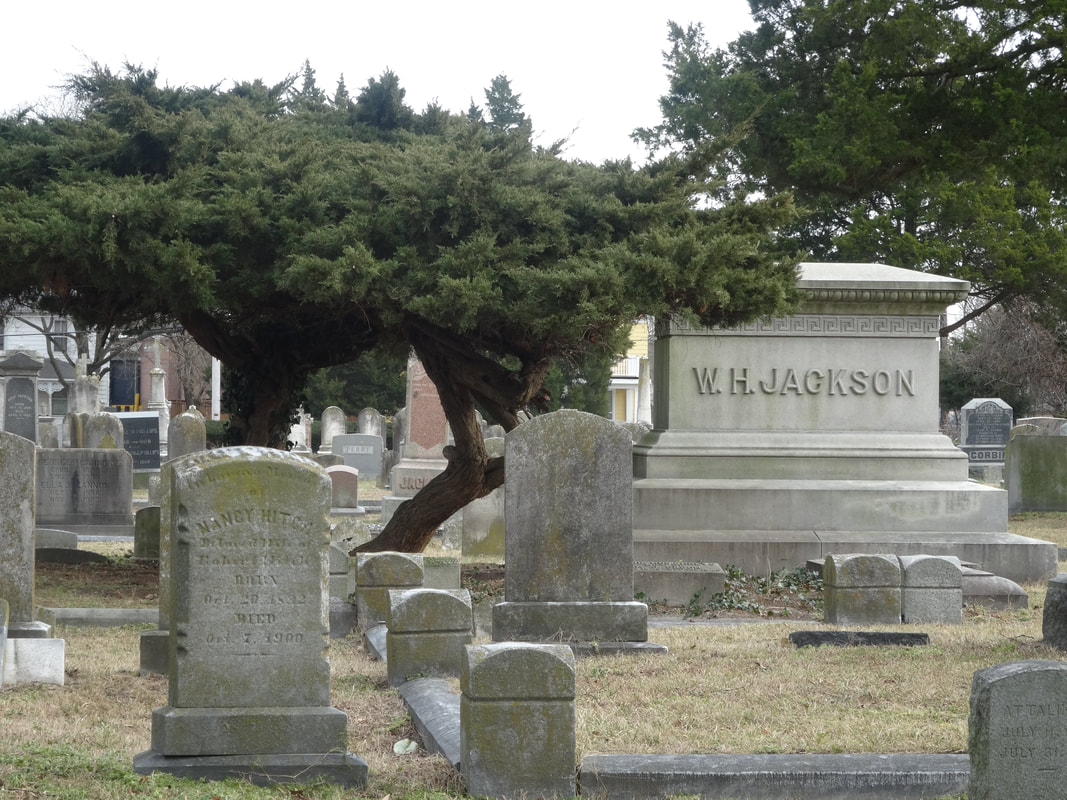 Parsons Cemetery, located in Salisbury, is today both operational and historic. According to their website, it is an urban green space, an outdoor museum, and in the words of architectural historian, Keith Eggener, urban cemeteries "are where life meets death, nature meets city, and present meets past." Preservation Maryland recently bestowed Parsons Cemetery with the 2020 Best of Maryland Community Choice Award. Over the past several years, the Parsons Cemetery Advisory Board has worked hard to develop walking tours in Parsons Cemetery. Seven tours have been developed and more are being planned for future release. In addition to the tours, Parsons Cemetery is an active participant in the Wreaths Across America program which honors veterans at Christmas time. Over the past year, a comprehensive database was created to identify all the veterans who are interred in Parsons Cemetery so they can be recognized, even those who have no markers. Work is now underway to create a comprehensive database of all first responders interred in the cemetery. Ultimately, the Board’s goal is to make the information in the Cemetery Information Management System (CIMS) available to the public, so they can search for and locate any person interred in Parsons Cemetery. However, this information is not very useful if people are not easily able to locate graves. Thus, the Board believes the installation of signage is a critical next step in the continued development of self-guided tours and other activities like Wreaths Across America. Currently, there are no signs which delineate the layout of the cemetery. Parson’s Cemetery is broken into 9 sections with 40 rows of plots. Through the strategic placement of 19 signs at various points in the cemetery, the signs will make it easier for people to complete the self- guided tours in a timely manner. The signs will also make it easier for visitors to locate a specific person interred in Parsons. The impact of these signs will be immediate and long-lasting, as the signs will be a permanent feature of the cemetery. Work is expected to be completed by June 2021. You can visit their site, by clicking here. Winter Wonderland: Illuminating Traditions Tuesdays through December 29 A seven-week virtual celebration of winter holidays from around the world and their traditions of light. Each video illuminates a new tradition. Pick up a craft kit to take part in the at-home activities. Reserve your kits at 410-742-4988 x 115 or go to wardmuseum.org. Ice Ice Berlin: Ice Art Sculptures & Holiday Shop Night Friday, November 27, 5-9pm 24 holiday ice sculptures carved by award-winning ice artist Erik Cantine throughout town, pinecone birdfeeder craft at the Calvin B. Taylor Museum, Santa, carriage rides, shops open until 9pm. Small Business Saturday Saturday, November 28 Shop local this season! Free Carriage Rides in Berlin December weekends, 11am-3pm A Miracle on Market Street Friday, December 4, 5:30-8:30pm Walk through the winter wonderland in Downtown Pocomoke City with a tree lighting, holiday music, dance performance, carriage rides, sidewalk sales, vendors, Mr. and Mrs. Claus, a bonfire, and carol sing-alongs. Light Up Berlin December 11-31 Drive around town and look at all the beauty Berlin has to offer during this holiday house decorating contest! Tour map list will be available at berlinmainstreet.com Holiday Tea at Poplar Hill Thursday, December 10, 11:30am Celebrate the holiday season at Poplar Hill Mansion, Salisbury’s oldest house, with a tea and menu featuring soup, tea sandwiches, scones, desserts, and more. Safety precautions in place. RSVP by December 4 at 410-749-1776. A Pemberton Christmas Saturday, December 12, 11am-4pm Enjoy a festive day at Pemberton Historical Park with holiday music, decorations, tours of the grounds, wreath-making classes, gingerbread-making contest, socially distanced photos with Santa, fire pits, vendors, food truck, and more. 2nd Friday in Berlin Sunday, December 13, 5-8pm Shop, see Santa, and enjoy live music! Shop Local on the Lower ShoreIf you haven’t yet finished your holiday shopping or, maybe haven't even started, think about doing your shopping from small businesses across the shore. Shopping at a locally-owned and operated business is truly a unique experience. While everyone was hunkered down during the COVID pandemic, local shops, restaurants and galleries were struggling to create new ways for people to shop and eat out. Let’s show some love this holiday season and give those hard-to-buy- for on your list a unique gift made right here on the lower shore. For the Drink LoversRise Up Coffee- Who wouldn’t love their slogan; Grown by Friends. Roasted by Friends. Enjoyed by Friends. Coffees, espressos, blends, coffee club, swag and gift cards are available. Wind Mill Creek Winery is a fairly new winery and vineyard located just on the outskirts of downtown Berlin. The main building is a meticulously restored 1858 homestead which has been in the family for decades. New this season is an igloo village, yes, you just read that right! No one else is offering this anywhere, so if you’re looking for a gift that is unique, this is it. Rent the igloo by the hour and sip their selection of delicious dry wines. You can even have their wines shipped direct to your family and friends. Bordeleau Vineyards & Winery whose name literally means the water’s edge is located on the banks of Wicomico Creek south of Salisbury. Bordeleau offers tastings in their cozy tasting room or weather permitting outside on their patios. A loyalty program and wine club membership are also available and make great gifts. Stock up this holiday season on some of their award-winning wines. Seacrets Distilling Company offers plenty of award-winning spirits, in a variety that will suit any palate. A fearless collection of premium small-batch, handcrafted spirits; bold spiced & gold rums and sweet white & coconut rums, ultra-smooth vodka and exceptionally refined gin. Their flavored vodkas are a must try – lemon drop, orange, ruby red grapefruit, bumbleberry and passion fruit, macerated with fresh fruits. And don’t forget their traditional bourbon and American whiskey. I gift basket of these selections will be a huge hit! Burley Oak Brewing Company, as their apparel says hand-crafted goodness. Burley Oak is located in Berlin and is a local favorite. Pick up a growler or two for that craft beer lover on your list. Evolution Craft Brewing Company might just arguably be the best restaurant and taproom in Salisbury. They offer gift cards and a loyalty program which includes all seven of their restaurants. We couldn’t say it better than they do, “Ever-better beer for ever-better food. An excellent recipe for ever-better times.” Tall Tales Brewing is located between Salisbury and Ocean City. This brewery has gift cards, growlers, branded apparel, and the coolest outdoor pizza oven and bar anywhere in the area. The Buzz Meadery is located in downtown Berlin, Maryland. They are devoted to using local produce and honey to create unique flavors of mead. This is a great new idea for holiday giving. Specialty Crafted & Unique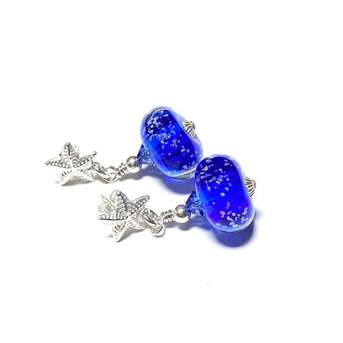 Uncle Jon’s Soap, Beards, Bath & Beyond Ok, yes, they have gift ideas for everyone but this is especially good for the guys on your list. They’ve got the dudes covered with everything from shave soap tubs, shave brushes, aftershaves, head balms for the bald, mustache wax, grooming kits and so much more. You’ve got to check it out! Free shipping is provided on orders over $100. Beach Memories Jewelry, located right on Main Street in downtown Berlin offers gorgeous, hand-made glass beads and glass bead jewelry. One particularly cool item is the sand encased glass bead. Put a little sand in your beads and create a lasting memory for anyone on your list. They will also lovingly and respectfully create a beautiful piece of keepsake jewelry with your loved ones cremains. A truly special gift indeed. Jeffery Auxer Design Studio offers hand-blown glass items from ornaments to lighting fixtures. Is items are not only unique and gorgeous but both functional and ornamental. Even more cool? Give someone a gift of a class where they can create their own holiday ornament. He studio and gallery are right behind the Atlantic Hotel in Berlin Art Lovers on Your ListBishop’s Stock Fine Art, Craft & Wine in downtown Snow Hill is a mainstay of the downtown and not only offers 2 and 3-dimentional art but also offers jewelry, textiles and boutique wines. Purchase a wine club membership and discover some really great small batch wines. Each December, owner, Ann Coates has a ‘bin sale’ offering unframed works by regional artists. This is a great way to own or gift some really fabulous art! OC Center for the Arts is a must stop to take in their wide selection of art by regional and local artists. Their gift shop also sells a variety of handmade items including jewelry, pottery, prints and handbags. Gift someone on your list a class (virtual for now) in all varieties of medium from pottery to watercolor to oils and photography. Salisbury Art Space or SAS is located in downtown Salisbury and has a large gift shop selling a wide variety of hand-made items from local and regional artists. Another great gift is a gift of membership. Memberships are a way to show your support year-round. The Mudhud Clay Art Studio, located in Salisbury is a clay studio offering membership levels for creating your own clay masterpiece. The Mudhud offers, classes, memberships and giftcards. They also host ‘clay’ parties perfect for the holidays or birthdays. For the BibliophileThe Greyhound Indie Bookstore, offers a wide selection by local authors. Owner, Susan Ayers Wimbrow is an author herself. She has a wide selection of books for both young and old. Sweet Tooth Fixes Smith Island Cake, YESSSS. From traditional cakes to cake bites, there’s a flavor for everyone, even gluten free. These sweets are the real deal, no knock-offs here. They offer shipping too! Come to their store in Crisfield and you won’t be able to resist a little holiday indulgence. On What Grounds Coffee House on Main Street in Berlin has so much more than coffee. Stop in and check out their wide selection of house made chocolates, packaged beautifully for a ready-made gift. This holiday season, visit a Main Street. Step out of your car. Take in the sights and sounds of the Beach to Bay Heritage Area. Buying a gift card to any main street business supports all our small business owners. After all, they are our friends and neighbors. Bicycling is a great activity when trying to social distance and still get outside and enjoy spectacular scenery and a little exercise. There is no better place than the Eastern Shore of Maryland with its deserted country roads, rivers, and ferries. Jody Arneson at Mid Atlantic Day Trips explored White Haven and Wicomico County in an article early this year that includes fabulous pictures to whet your appetite. They started at the Whitehaven Hotel on the banks of the Wicomico River, loaded their bikes on the ferry where they spoke with the ferryman, Dennis. See what they saw and learn what the lower shore offers to both casual and serious bicyclists.
Click here to read the entire article |
Archives
July 2024
Categories |

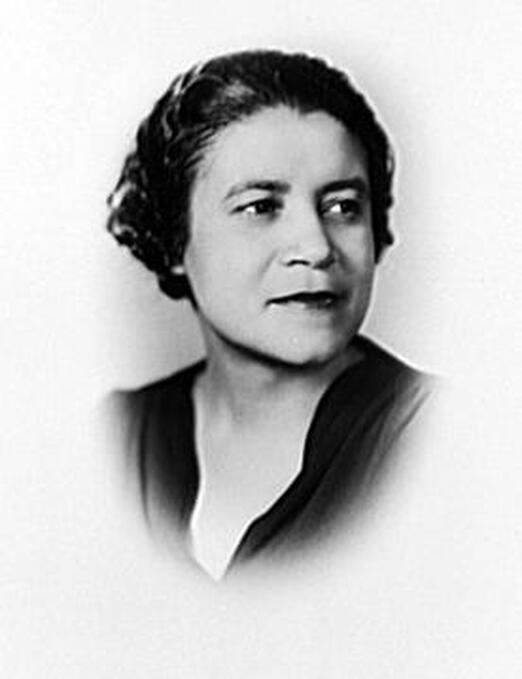
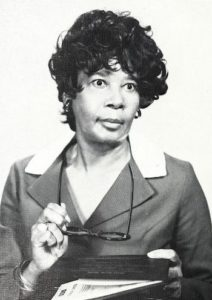
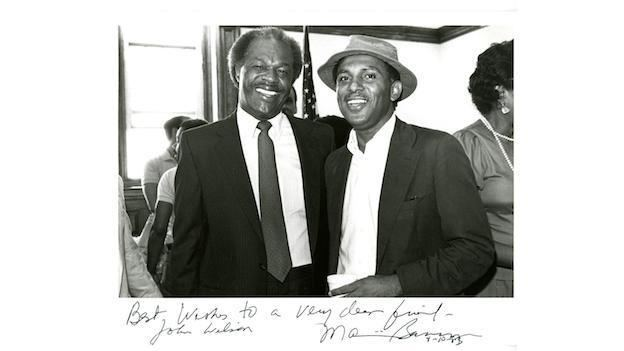
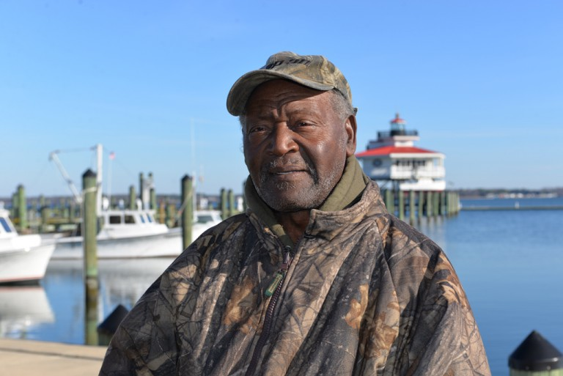
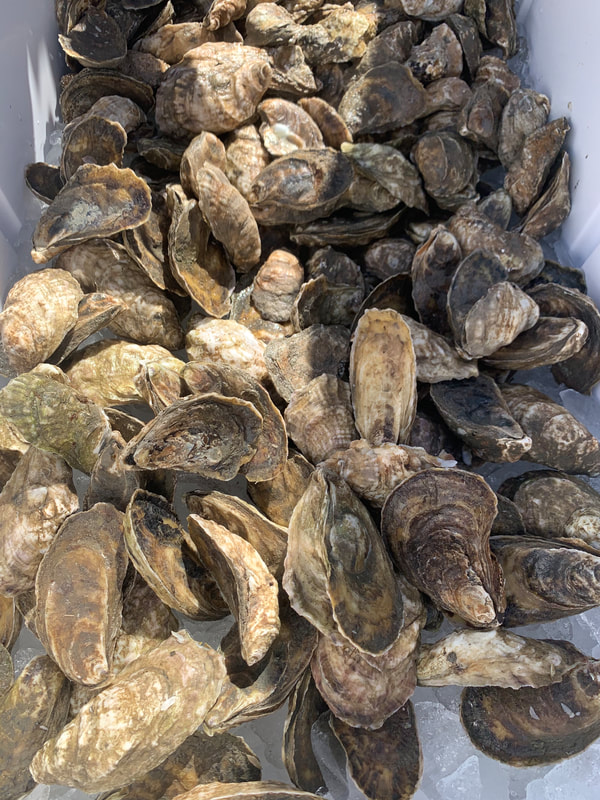
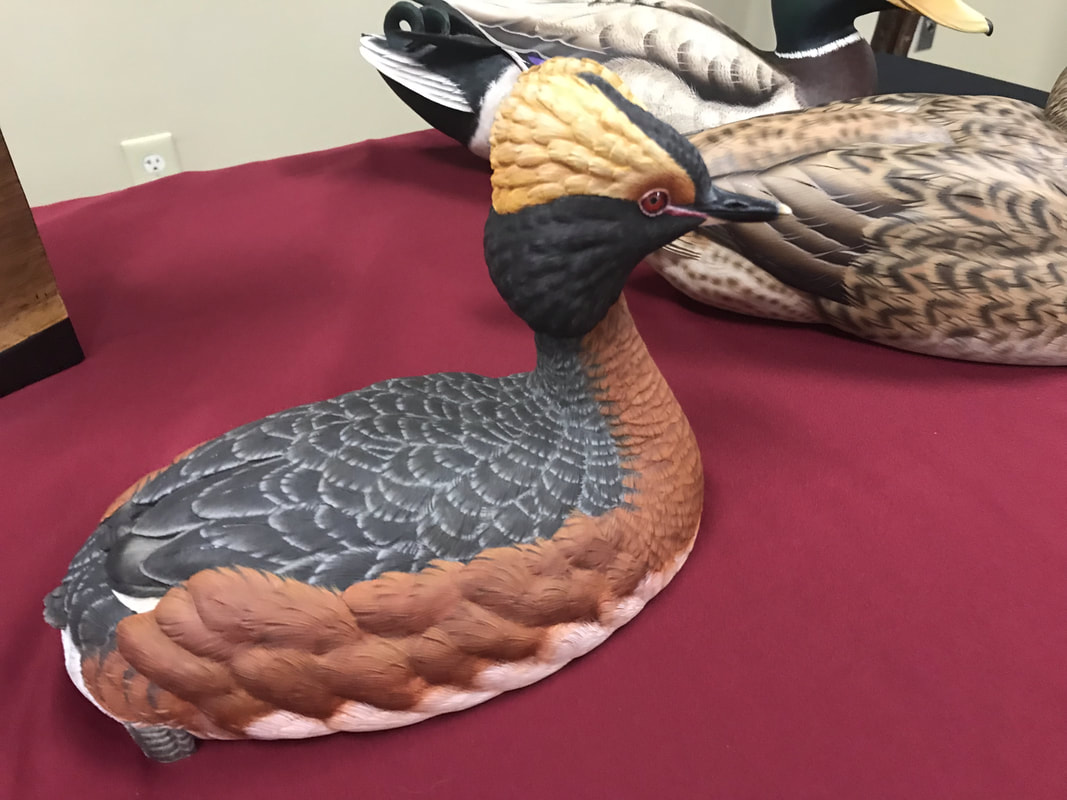
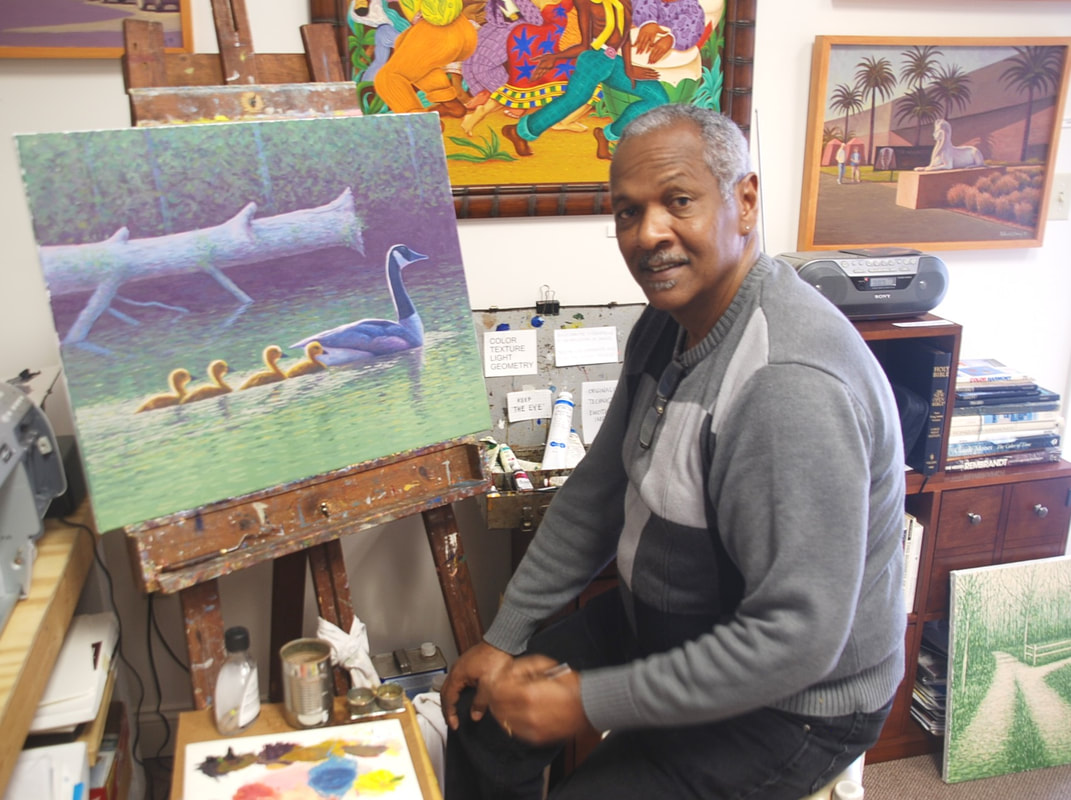

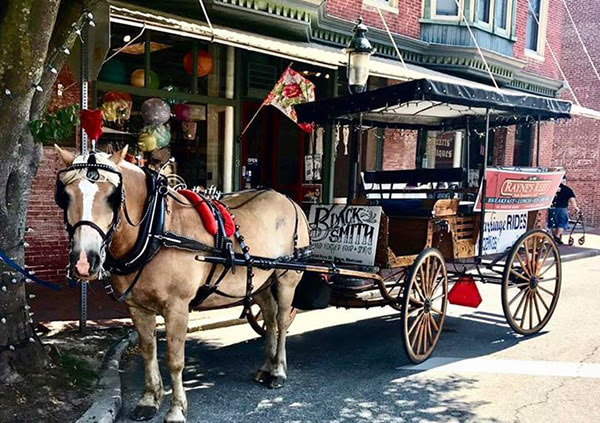

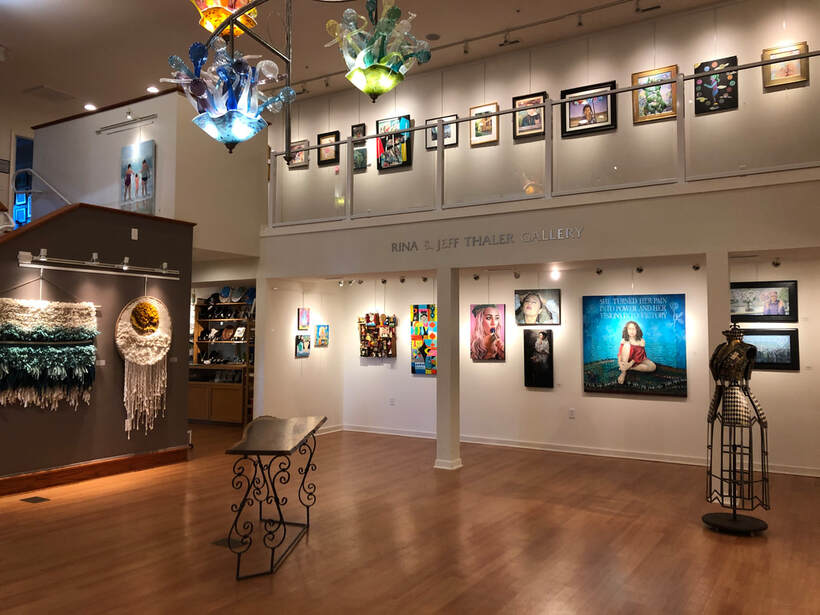
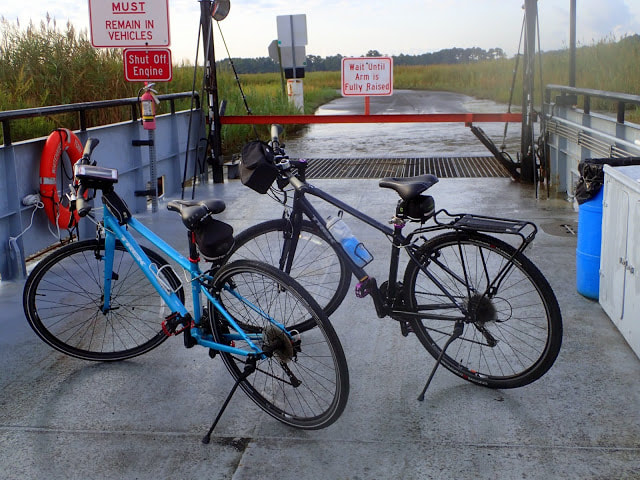
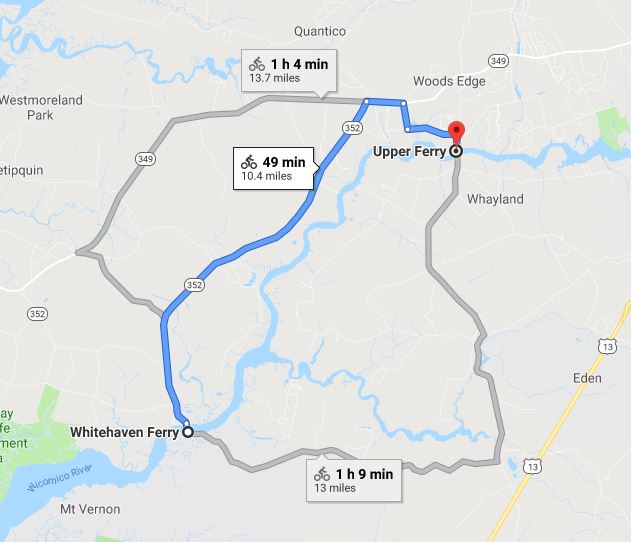
 RSS Feed
RSS Feed
